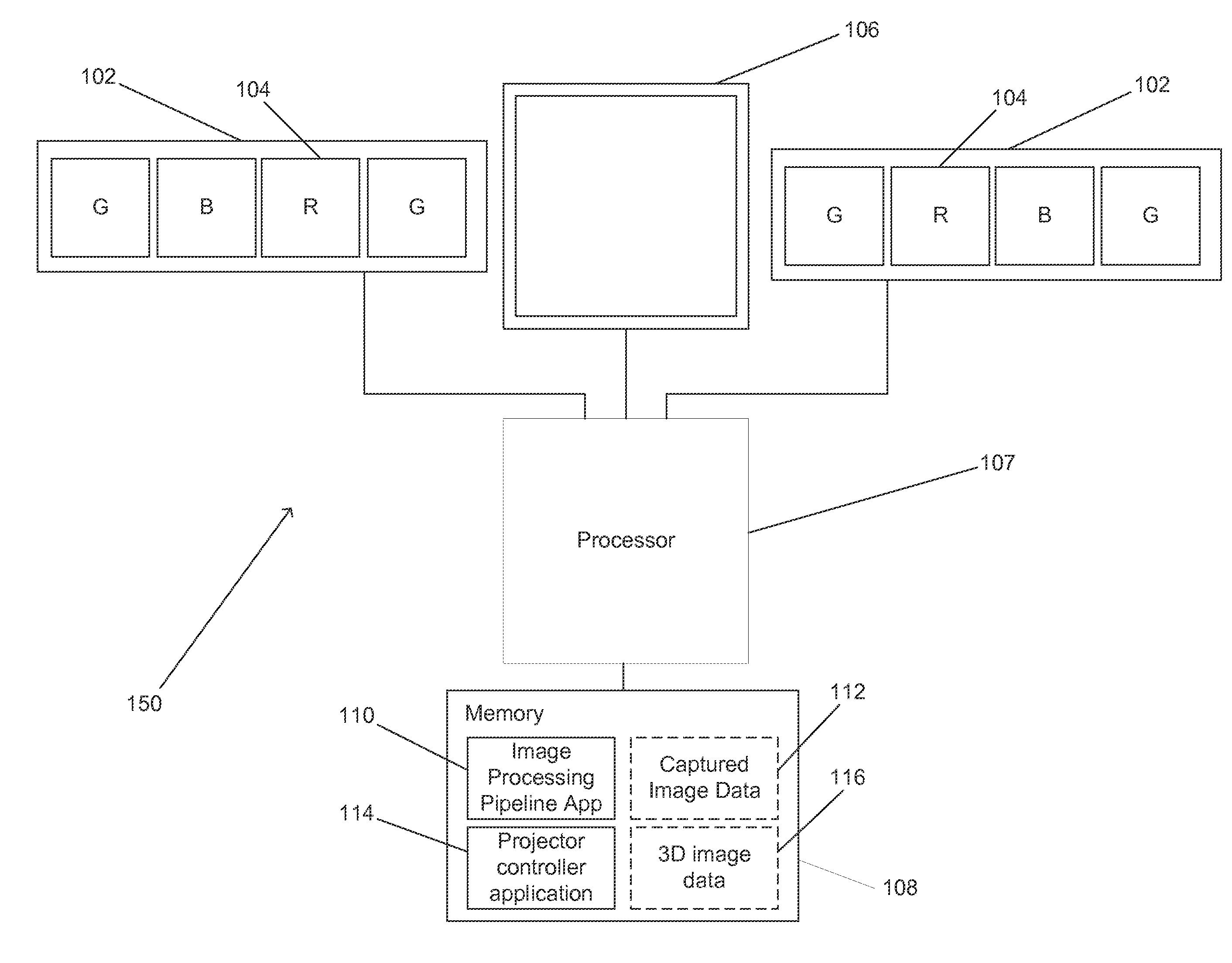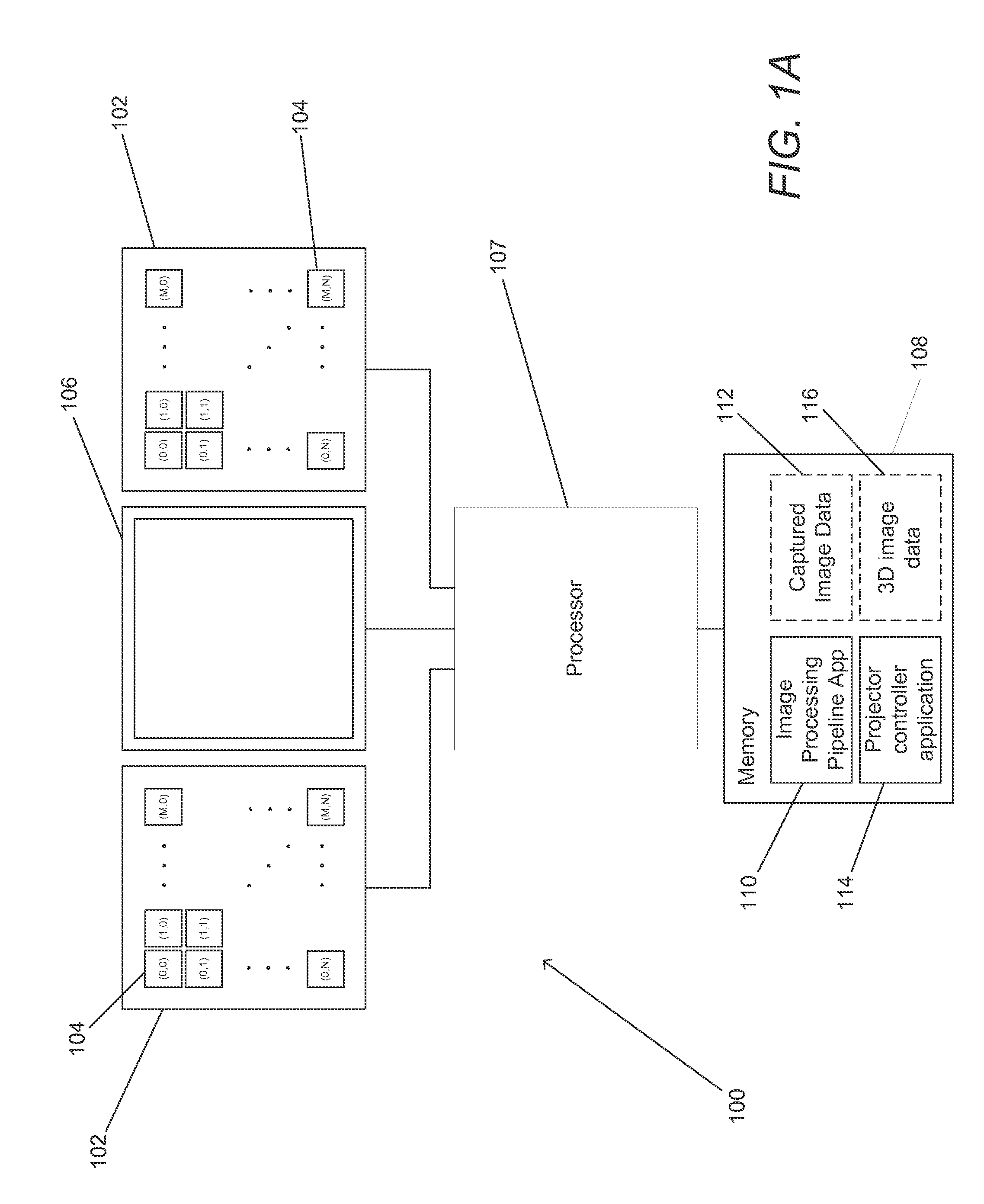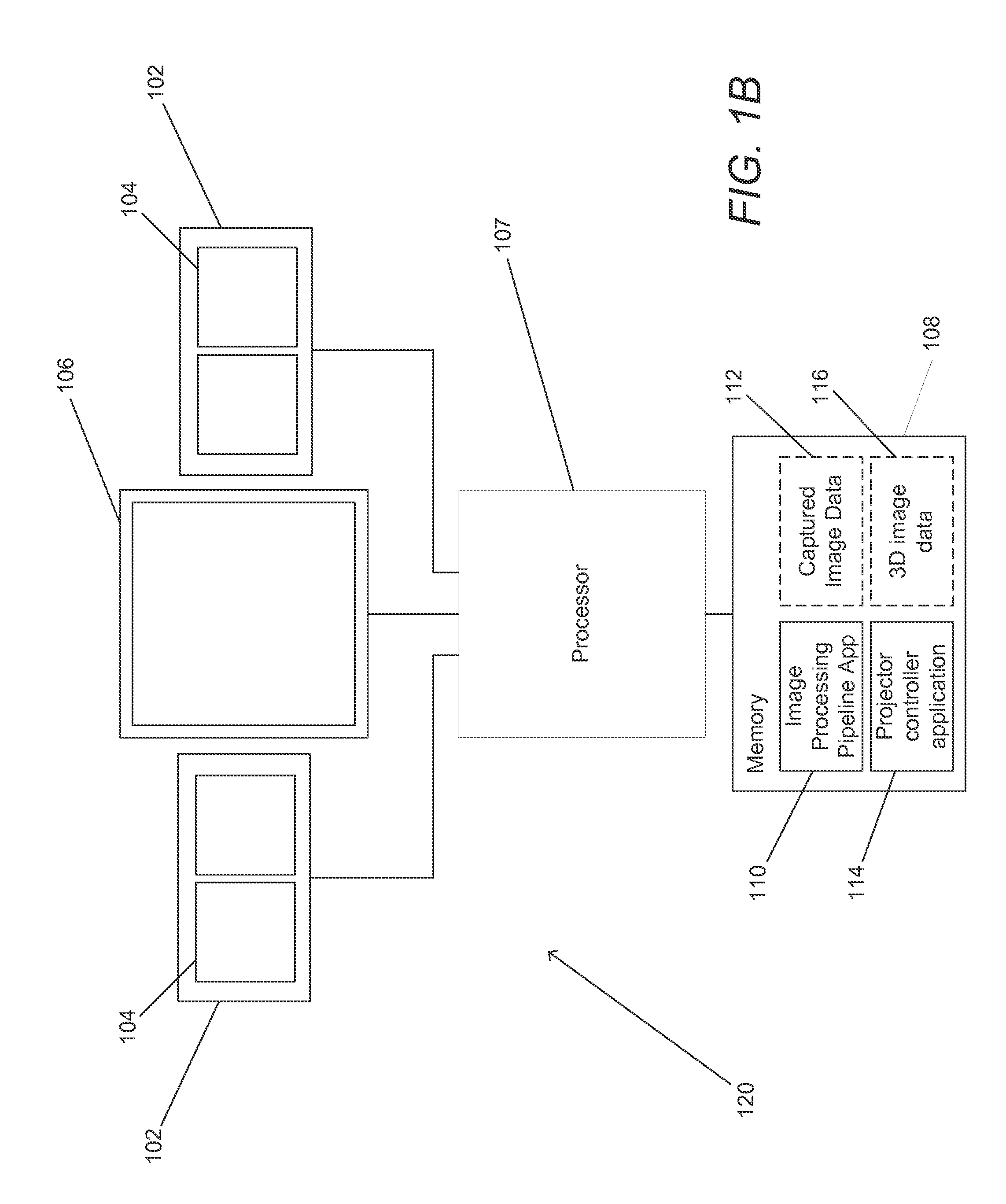Systems and Methods for Estimating Depth from Projected Texture using Camera Arrays
a projection texture and camera array technology, applied in the field of multi-baseline stereo systems, can solve the problems of depth estimation failure in scenes without texture regions, regions of depth ambiguity,
- Summary
- Abstract
- Description
- Claims
- Application Information
AI Technical Summary
Benefits of technology
Problems solved by technology
Method used
Image
Examples
Embodiment Construction
[0058]Turning now to the drawings, systems and methods for estimating depth from projected texture using camera arrays in accordance with embodiments of the invention are illustrated. In several embodiments, a camera array is used to perform three-dimensional scanning of an object illuminated by a projected texture. In other embodiments, the camera array is configured to capture a depth map of a scene illuminated by a projected texture.
[0059]In many embodiments, a two dimensional array of cameras is utilized to capture a set of images of a scene illuminated by a projected texture and depth is estimated by performing disparity searches using the set of images. Corresponding pixels in the set of images captured by the cameras in the two dimensional array of cameras are located on different epipolar lines. When a random projection pattern is used, depth estimates can be unreliable where regions along an epipolar line are self-similar. With each increase in the number of different epipo...
PUM
 Login to View More
Login to View More Abstract
Description
Claims
Application Information
 Login to View More
Login to View More - R&D
- Intellectual Property
- Life Sciences
- Materials
- Tech Scout
- Unparalleled Data Quality
- Higher Quality Content
- 60% Fewer Hallucinations
Browse by: Latest US Patents, China's latest patents, Technical Efficacy Thesaurus, Application Domain, Technology Topic, Popular Technical Reports.
© 2025 PatSnap. All rights reserved.Legal|Privacy policy|Modern Slavery Act Transparency Statement|Sitemap|About US| Contact US: help@patsnap.com



